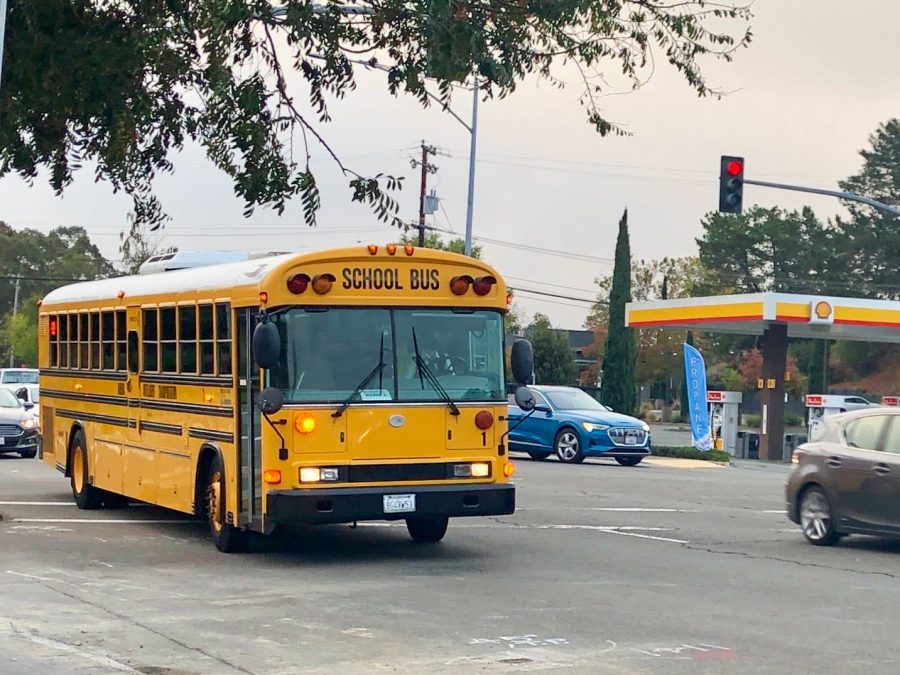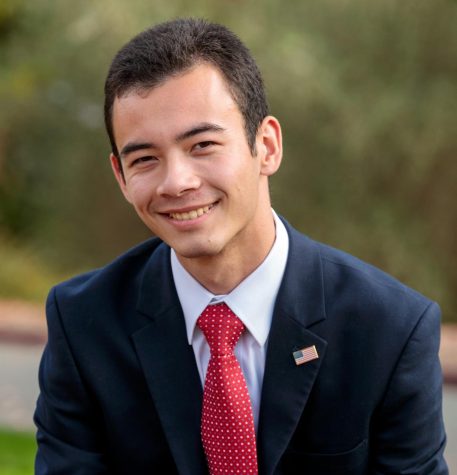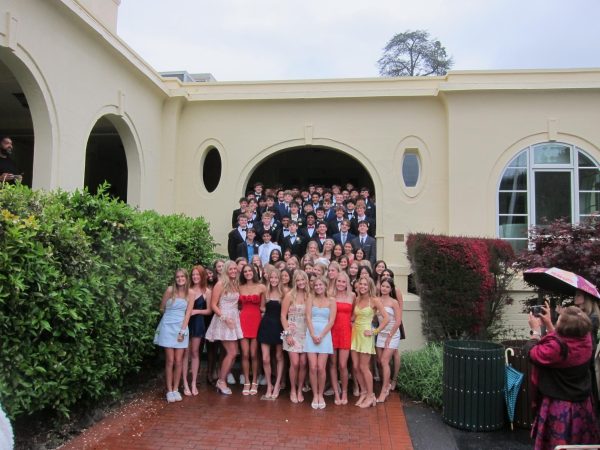Transportation plans modified in wake of virus
December 1, 2020
Branson administrators modified the school’s transportation plan, increasing reliance on smaller-occupancy vehicles and initiating an e-bike program as the coronavirus pandemic wears on.
Though the school has seesawed between on-campus instruction and distance learning this fall, the school’s transportation team crafted several measures which would allow a safe return to campus, changing some aspects of students’ commutes but maintaining others, though Branson’s Chief Financial and Operating Officer David Hanson acknowledged some “bumps.”
“We definitely had some bumps at first because this is the first time we’ve allowed sophomores to drive,” he said. “We also changed our rules about carpool size, and this is all COVID-related.”
Indeed, with the sheer scale of COVID-19’s impact on student transportation, risks and unforeseen problems, as well as novel programs such as e-bikes and a change in bus operation, have emerged.
Branson’s transportation team selected a different bus company, Bauer’s, to run lines to San Francisco and the East Bay, than in prior years — and ran into problems on the first day.
“We had a mechanical issue, so we had to work through that, which made the buses late, which made the kids late,” Hanson said. “The buses are supposed to have WiFi, and the bus company didn’t know that; well, actually, they did know that, but they didn’t implement it right away, so we had a couple weeks without Wi-Fi.
“We got that corrected,” he said.
But such first-day headaches paled in comparison to the task the school set out to do: Getting students to campus, safely, during the coronavirus pandemic. “This took unusually long, but these are unusual times; your patience throughout our process was much appreciated,” a statement from the school’s transportation team reads.
Aside from obtaining a new bus-transportation provider, the school established a revamped, socially distanced bus system with two buses picking up students from San Francisco, of which one also serves Marin riders, and a bus line serving some East Bay stops and the SMART train station in San Rafael.
A faculty member — Jeff Symonds, according to rider Reid Morris — drives a shuttle from Marin Circle in Berkeley, and the school operates four vans looping between Branson’s campus and the St. Anselm’s parking lot, Hanson said.
Seeking another way to diversify student transportation beyond cramped carpools, the school also established an e-bike system this fall, where Branson provides $750 each to students seeking to purchase e-bikes from certain vendors. So far, eight student families and seven employees have registered for the program, Hanson said.
“When I came here, I was a little bit surprised that we weren’t really pushing the idea of bikes,” Hanson said, regarding the motivation for the e-bike program. “A lot of people are doing it on their own, but the school wasn’t really actively pushing folks to think about bike options.”
The school has also started its own fleet of e-bikes, of which the first two arrived early this month, to lend to students. It’s unclear when the school-owned e-bikes will be available, however, as they will be primarily used for trips off-campus, currently prohibited due to COVID-19.
The transportation team also plans to conduct service days for student-owned e-bikes, perhaps starting in January, Hanson said, though a vendor to service bikes hasn’t been determined yet.
Along with the changes in bus and bike transportation, the transportation team itself changed. The recent turnover occurred smoothly, however, Hanson said, who took over from Ye Kennedy.
“We have all of our facilities guys, me, Amber [Johnson], Dave Schneider, Justin Culley — it’s really more of a team,” Hanson added about the nature of Branson’s transportation staff.
Nonetheless, student carpools have run risks associated with transporting students to school in the coronavirus pandemic. Hanson said the school can’t ensure safety in carpools, and some students report conditions more cramped than prior to the pandemic.
The school approved 48 permits for carpools organized by parents and students, and it set maximum ridership at four. Hanson noted that, amid the pandemic, many carpools have fewer riders, and many also decided to drive solo.
“We’ve asked people to use their common sense and to do whatever their family is most comfortable with in terms of planning for carpools,” Hanson said, referring to safety protocols.
“We’ve told families that we want them to do what’s comfortable for them, and that’s also why we have opened parking up to sophomores, and we’ve also opened parking up on the tennis courts. If people don’t feel comfortable in a carpool, and they want to drive to school, we want them to be able to do that.”
Hanson added that school officials monitor carpools in the morning, as they arrive on campus, for adherence to virus guidelines, and that the school has followed up with violators “a few times” via email. But he underscored that, at least for carpools, riders, not the school, are responsible for safety.
On ensuring safety in carpools, Hanson said, “We can’t. I mean, that’s the honest answer. In a time of COVID, we can’t ensure a perfectly safe environment anywhere … we’re doing everything we can with all the protocols that we know of to keep people safe, and we’re doing our very best to enforce them.
“But what you do when you leave campus in your car, I have very little control over—I have no control over that,” he said.
“Branson definitely had to forgo some things in order to maintain the carpool system,” sophomore Hayley Yoslov, a carpool rider, said. “We’ve got five people [including the driver] and a dog in a small car, and we’re definitely packed tight together, but we’ve got the windows open and masks on, so I think we’re being as safe as we can be, with all the circumstances.”
Yoslov added that her carpool this year has been “a lot more crowded” compared to last year’s, which she said was in a large truck with slightly fewer people. “We just had better circumstances last year,” she said.
Hanson said he didn’t know of cars with five people on board. “I can’t think of any carpools that have 5, I do know of a few carpools that have four,” he said.
Guidance on virus-related protocols in cars has been slim. “The guidance we got from the county was largely around buses, not around carpools,” Hanson said, adding that the school advises several guidelines surrounding hand-washing, wearing masks, social distancing and ventilation.
The pandemic hasn’t limited the scope of safety issues, however: A break-in to a student automobile parked in the St. Anselm’s lot in late October catalyzed school officials to examine safety at the lot. Aside from filing a police report, Hanson said the school seeks to pursue several safety measures.
“We’re looking into putting cameras on that property and signage,” he said. “We obviously have to get the church’s permission to do that, so we’re working though that process now, because we don’t own the land, but I think that’s what we’re going to do. We’re also posting people down there in the mornings and in the afternoons.”
It’s unclear exactly how congested the roads around Branson have been — a focal point of last year’s passage of Measure F — compared to past years, where traffic counts had been rather “stable,” according to Hanson. The school has not completed any traffic studies since the pandemic began.
Hanson added that Branson has been working with Town of Ross officials, as well as neighbors, in crafting a Traffic Demand Management Plan, involving various methods of traffic mitigation, which he expects to be presented within six months.
Changes in the school’s transportation plan have modified some students’ commute routines, though others report few differences compared to last year.
Sophomore and Novato resident Nathan Kwei typically awakens at 6:20 every morning to do workouts. What he does after such strenuous exercises, however, has changed due to the pandemic.
“Normally, I would take the SMART train,” Kwei, who’s currently driven to school by his father, said. “My family is not the biggest on getting on public transportation, because [of] the risk of exposure, plus I have a sister at MCDS. If I get COVID, then it would … be two schools that would be affected, and so I think it makes more sense for us not to take the SMART train and drive independently.”
Classmate Sophie Liu also opted for an intra-family drive to school, rather than a carpool. Last year, she rode on a carpool to school; now, her brother, a senior, drives to a spot at Branson’s back parking lot.
“I was going to take a carpool before the pandemic, and then we realized there weren’t actually enough seats in the car, but I could try and arrange something if I had to, but I do not have a backup carpool,” she said. Her carpool last year was driven by a senior.
“I think it really depends on the status of the carpool, and the driver, and the things that they put in place,” she said, regarding the safety of riding with a carpool. “If all the windows are down, and there’s a certain level of space in between the seats, [and] everybody’s wearing a mask, I’d feel a lot safer than if it was a closed car and nobody was wearing a mask and we’re all on top of each other.”
Noam AuYeung, also a sophomore, didn’t change how he commutes to campus despite the pandemic. The cyclist wakes up around 7:30 in the morning to bike to school.
“I bike, and it’s pretty smooth,” he said. “On the way here, it’s downhill for the most part, so it’s quicker and much easier for me, and the way back it’s uphill, obviously, which takes longer.” He added that he feels safe biking to school.
Reid Morris, a junior, boards the Jeff Symonds-driven van from Berkeley’s Marin Circle every morning and afternoon. He said the addition of an East Bay bus, which serves the Bay Area Rapid Transit stations in El Cerrito, “shaves 40 minutes off both of our times.”
“We meet at 7:45 at the Marin Circle,” Morris said. “Last year, we had to meet at 6:50 … pretty much an hour later, it’s amazing.
“On the way back, if Jeff can’t take us, [because] he has meetings or something, then we have to take the yellow bus to either one of the BART stations, but if he can take us, then we just go to the Marin Circle.”
He described his van as “not crowded,” saying each row only seats one student, but said the bus serving the BART stations has been surprisingly devoid of students.
“I just think it’s kind of crazy that they have that huge thing for only three kids, and then [a] tiny little van for four kids,” he said. “The yellow bus is super not crowded, I think it’s too not crowded, actually. It’s less efficient.”
The split of Branson’s East Bay bus service into two lines has reduced travel times, but it also has allowed Morris to sleep in. He now wakes up at 6:45 — an hour later than he did prior to the pandemic. On the way back, however, he has to wait over an hour after dismissal to board his van or bus.
“I think it’s a bit strange that the bus departure time is at 3:45, and that school ends at 2:30,” he said. “And so everyone who’s not taking the bus leaves campus, and then the kids who do take the bus are kind of left on campus, not knowing what to do. … I think that the buses should definitely leave earlier.”




